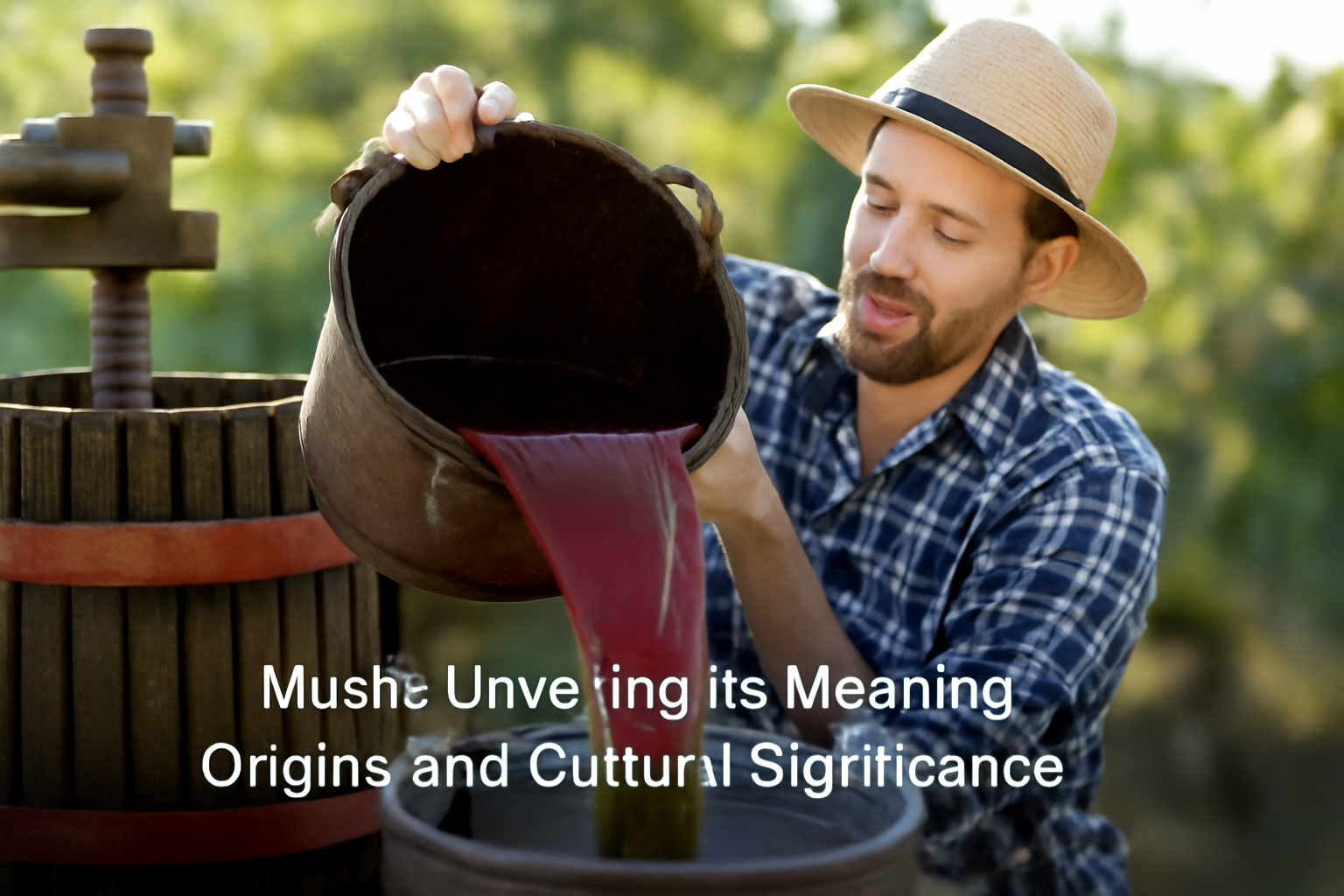The term musté carries a rich tapestry of meanings across various cultures and languages. From its roots in winemaking to its cultural implications, understanding musté offers insights into tradition, language, and identity.
What Is Musté? Definition and Meaning
At its core, musté refers to the unfermented juice of freshly crushed grapes, known as musta in Finnish. This juice is the precursor to wine, capturing the essence of the grape before fermentation alters its composition. The term “musté” itself is derived from combining “musta” (black) with the suffix “-e,” a construction introduced by Finnish physician and philologist Elias Lönnrot in 1836.
In French, while “musté” isn’t a standard word, it closely resembles terms like “musité” or “mustée,” evoking a sense of freshness and purity associated with unfermented grape juice.
The Origins of Musté
Etymology and Linguistic Roots
The Finnish “musta” translates to “black,” and when combined with “-e,” it forms “musté,” denoting the black or dark juice of the grape. This term reflects the deep, rich color of the unfermented juice, which is integral to the winemaking process.
In the broader context, “must” in English has its origins in Old English “mōste,” the past tense of “mōtan,” meaning “to be allowed to” or “have to.” This etymological path underscores the evolution of language and how terms adapt and transform across cultures and time periods.
Cultural Significance of Musté
A Symbol of Tradition and Community
Beyond its literal meaning, musté holds cultural importance in various societies. In regions with a rich winemaking heritage, the preparation of musté is a communal activity, often marking the beginning of the winemaking season. This practice fosters a sense of community and continuity, linking generations through shared rituals and celebrations.
Musté in Modern Context
In contemporary settings, the concept of musté has transcended its traditional roots. It now symbolizes a return to authenticity and a celebration of natural processes. As consumers increasingly seek organic and unprocessed foods, musté represents a connection to nature and a desire to preserve traditional practices in the face of modern industrialization.
Musté in Literature and Art
The imagery associated with musté—its rich color and unrefined purity—has inspired various forms of artistic expression. Writers and artists have drawn parallels between the unfermented juice and themes of potential and transformation, using musté as a metaphor for untapped possibilities and the beauty of natural processes.
Conclusion
Musté is more than just unfermented grape juice; it is a term that encapsulates tradition, culture, and the essence of winemaking. Its origins in language reflect a deep connection to the land and the practices that have sustained communities for generations. Understanding musté offers a window into the values and histories of cultures that have long revered this natural elixir.
FAQs
1. What does “musté” mean?
“Musté” refers to the unfermented juice of freshly crushed grapes, a crucial component in the winemaking process.
2. Where does the term “musté” originate?
The term “musté” is of Finnish origin, combining “musta” (black) with the suffix “-e,” introduced by Elias Lönnrot in 1836.
3. Is “musté” used in other languages?
While “musté” is specific to Finnish, similar concepts exist in other languages, such as “musta” in Finnish and “mustum” in Latin, both relating to unfermented grape juice.
4. What is the cultural significance of musté?
Musté holds cultural importance in winemaking communities, symbolizing tradition, community, and the natural process of fermentation.
5. How is musté used in winemaking?
Crushed grapes release the initial juice, which captures the pure essence of the fruit before fermentation begins.
